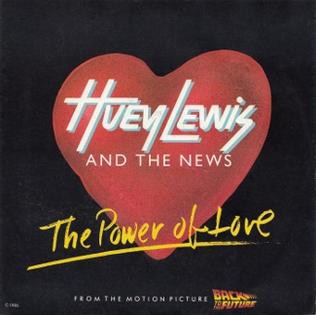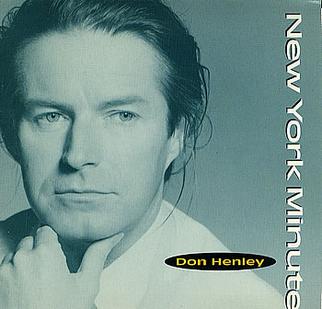 “Under Pressure” stands as one of the most iconic and powerful collaborations in rock history. When Queen and David Bowie joined forces in 1981 to create this groundbreaking single, they didn’t just produce a hit — they crafted a timeless anthem that captured the anxieties, hopes, and contradictions of the modern human condition. With its unforgettable bassline, soaring vocals, and profound lyrics, “Under Pressure” remains a cultural touchstone, continuing to resonate with audiences decades after its release.
“Under Pressure” stands as one of the most iconic and powerful collaborations in rock history. When Queen and David Bowie joined forces in 1981 to create this groundbreaking single, they didn’t just produce a hit — they crafted a timeless anthem that captured the anxieties, hopes, and contradictions of the modern human condition. With its unforgettable bassline, soaring vocals, and profound lyrics, “Under Pressure” remains a cultural touchstone, continuing to resonate with audiences decades after its release.
The genesis of “Under Pressure” was itself a remarkable meeting of musical minds. Queen, already renowned for their theatricality, musical virtuosity, and genre-blending tendencies, were at a creative high point following their 1980 album The Game. David Bowie, ever the chameleon, was fresh off his Scary Monsters (and Super Creeps) era, having cemented his status as one of rock’s most innovative and influential figures. Their collaboration was born out of mutual admiration and a shared desire to experiment, challenge conventions, and push the boundaries of what popular music could express.
The recording sessions took place at Mountain Studios in Montreux, Switzerland, a setting that had already become legendary due to Queen’s connection with the location. The atmosphere was electric yet spontaneous, with much of the song developing through improvisation and creative interplay. The famous bassline, played by Queen’s bassist John Deacon, is arguably the song’s defining element. Simple yet compelling, the groove serves as a foundation for the complex emotional layers built upon it. It’s a bass riff that instantly grabs the listener — urgent, insistent, and impossible to forget.
Vocally, “Under Pressure” is a stunning dialogue between Freddie Mercury and David Bowie. The song’s narrative unfolds through their alternating lines and harmonized choruses, showcasing both artists’ unique styles and vocal strengths. Mercury’s powerful, emotive delivery contrasts beautifully with Bowie’s more introspective, nuanced tone, creating a tension that mirrors the song’s themes. Their voices weave together with a synergy that elevates the track beyond a mere duet — it becomes a conversation, a shared emotional journey.
Lyrically, “Under Pressure” delves into the pressures and paradoxes of life, especially in an urban, fast-paced world. Themes of stress, societal breakdown, alienation, and the need for compassion are interwoven throughout the song. Lines like “Pressure pushing down on me / Pressing down on you, no man ask for” speak to universal experiences of anxiety and struggle, while “Love is the charity of the lonely” offers a hopeful counterpoint. The lyrics reflect a yearning for connection amid chaos, a desire for understanding in a world that often feels overwhelming.
Musically, the arrangement of “Under Pressure” is both sophisticated and accessible. It blends rock, pop, and funk elements seamlessly, creating a sound that is immediately engaging yet layered with nuance. The interplay of guitar, bass, drums, and piano provides a dynamic backdrop that shifts fluidly to support the vocal narrative. Brian May’s guitar work punctuates the track with sharp, emotive flourishes, adding texture and intensity without overpowering the vocals. The rhythm section maintains a tight, driving momentum that keeps the song moving forward with purpose.
One of the most remarkable aspects of “Under Pressure” is its enduring relevance. Released at the dawn of the 1980s, a decade characterized by political tension, economic uncertainty, and cultural upheaval, the song captured the zeitgeist while transcending it. Its message about the human need for empathy and connection in the face of pressure remains as poignant today as it was then. Whether listeners are facing personal struggles, societal challenges, or global crises, the song’s emotional core continues to offer solace and inspiration.
The impact of “Under Pressure” extends far beyond its initial chart success. The song topped the UK Singles Chart and performed well internationally, cementing its place as a major hit. But its legacy lies in its influence on subsequent generations of artists and its frequent presence in popular culture. The iconic bassline has been sampled and reinterpreted countless times, most famously in Vanilla Ice’s “Ice Ice Baby,” which sparked controversy and a renewed appreciation for Queen and Bowie’s original work. The song has also been covered by a diverse range of artists, from rock bands to pop singers, each bringing their own interpretation while honoring the original’s spirit.
Live performances of “Under Pressure” have been electrifying events. Queen incorporated the song into their setlists during the early 1980s, often inviting guest vocalists to join them in recreating the dynamic energy of the studio recording. After Freddie Mercury’s passing, surviving members of Queen have performed the song with various collaborators, underscoring its status as a timeless classic. David Bowie’s own live renditions added a layer of theatricality and introspection, reflecting his unique artistic vision.
Beyond the music itself, “Under Pressure” represents a moment of collaboration that few could have anticipated. Both Queen and Bowie were towering figures in their own right, known for their distinct styles and approaches. Yet, in this song, they found common ground — a shared understanding that art can be a powerful force for expressing the complexities of human experience. Their willingness to blend their voices, styles, and creative energies resulted in something that neither could have achieved alone.
The song’s production is also worth noting for its clarity and balance. Producer Reinhold Mack worked closely with the artists to capture the spontaneity of their collaboration while ensuring a polished final product. The mix allows each element — from vocals to instrumentation — to breathe, creating an immersive listening experience. The careful layering of harmonies and instrumental textures adds depth without clutter, allowing the emotional intensity to shine through.
“Under Pressure” also highlights the broader cultural shifts of the early 1980s. The post-punk and new wave movements were challenging traditional rock norms, while electronic music was beginning to infiltrate mainstream sounds. Queen and Bowie’s fusion of rock’s theatricality with funk’s groove and pop’s accessibility exemplifies this era’s experimentation. The song’s willingness to confront heavy themes within a catchy, radio-friendly format helped broaden the scope of popular music’s expressive capabilities.
In retrospect, “Under Pressure” can be seen as a prophetic statement about the challenges of modern life. The relentless pressures faced by individuals and societies—economic inequality, political strife, environmental concerns—mirror the song’s themes of tension and the search for compassion. Its refrain, “Cause love’s such an old-fashioned word / And love dares you to care for / The people on the edge of the night,” serves as a call to empathy that remains urgent and necessary.
The music video for “Under Pressure,” though simple by today’s standards, complements the song’s mood with stark black-and-white imagery that emphasizes isolation and emotional intensity. Its minimalism contrasts with the song’s rich sonic texture, creating a visual space that invites reflection on the lyrics’ deeper meanings. The video helped cement the song’s identity and reach a broader audience during the early years of MTV and music video culture.
As the decades have passed, “Under Pressure” has been embraced not only by rock fans but by a wider audience that recognizes its universal themes. It has become a staple on playlists for moments of reflection, motivation, and connection. The song’s ability to evoke both vulnerability and strength allows listeners to find personal meaning in its words and melodies, making it a shared cultural treasure.
In live performances and recordings alike, the chemistry between Freddie Mercury and David Bowie is palpable. Their voices complement and challenge each other, weaving a narrative that is both personal and universal. This vocal interplay is central to the song’s enduring appeal, showcasing two of rock’s greatest frontmen at the height of their powers.
In sum, “Under Pressure” is more than a collaboration; it is a masterpiece of musical expression and human insight. The fusion of Queen’s theatrical rock and David Bowie’s artful innovation resulted in a song that transcends time and genre. Its themes of struggle, compassion, and resilience continue to resonate, reminding listeners of the power of love and connection amid life’s relentless pressures. Decades after its release, “Under Pressure” remains a beacon of artistic brilliance and emotional honesty, a testament to what can be achieved when great artists come together to confront the complexities of the human spirit.


